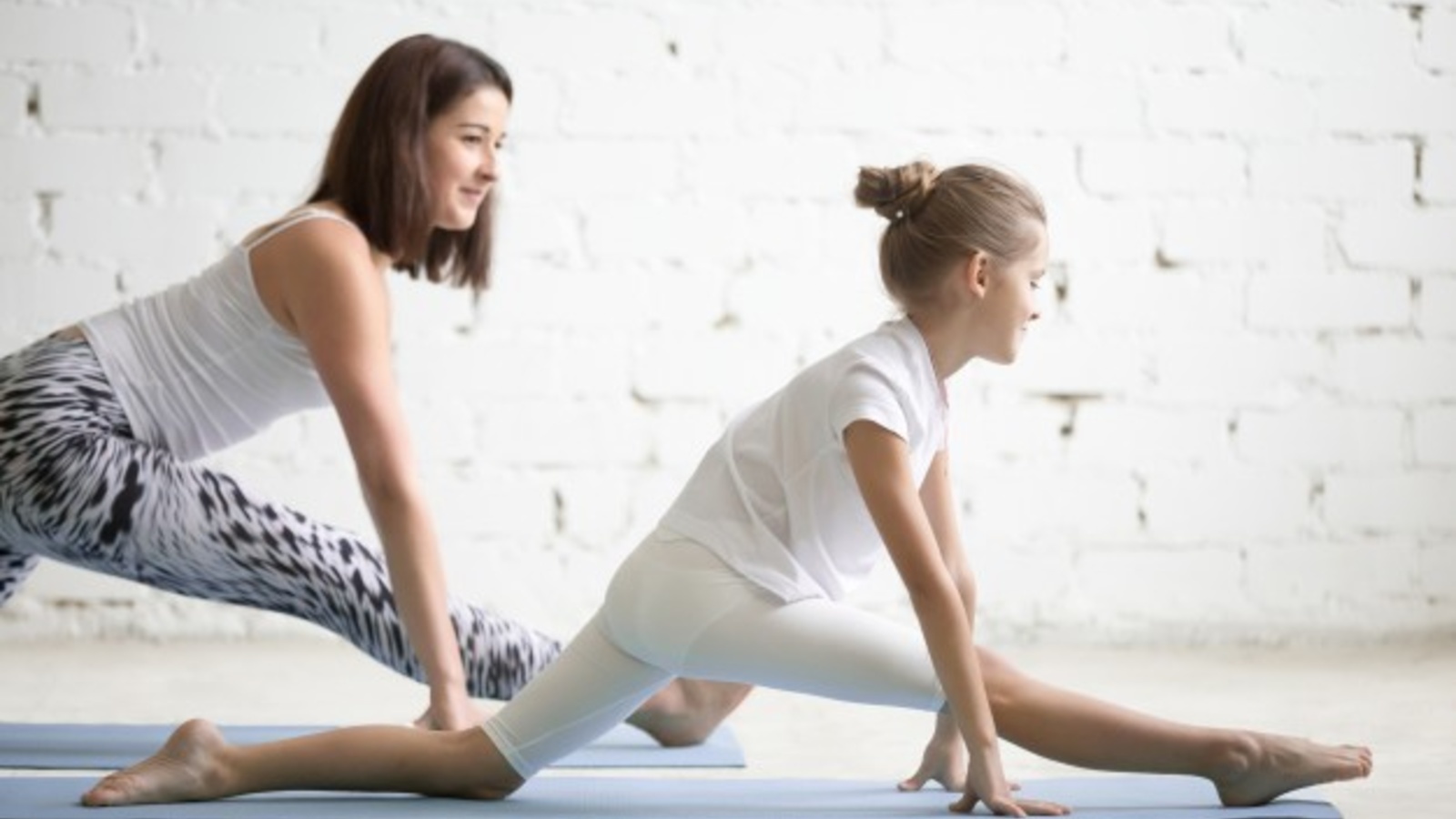
This is Mandy (and Ella) ...
Mandy works for the YMCA and one of her job roles is to run regular fitness classes for adolescents. Some of these classes include yoga, modern dance, aerobics, and callisthenics.
What are the differences between running fitness classes for young clients vs. adult clients?
Physically there is not too much difference between adolescents and adults, they have the same cardiovascular, respiratory, and skeletal structure, just on a smaller scale. The muscular system is a little different as younger clients have not yet developed extensive muscle tone or strength and it is not recommended that they do so until after their main growth spurt so certain activities, like resistance training, is avoided. The big differences that exist between younger clients and adult clients are in regards to their emotional, hormonal, and neurological differences. Teenagers are going through some major changes, like puberty, and this can be a very difficult time for them. They also have shorter attention spans, are more hyperactive, and may be experiencing issues with their peers which can all impact on a fitness class.
How do you determine what the best fitness activities are for each client?
I conduct a series of baseline assessments as part of the pre-exercise health screening and fitness appraisal process. These tests help to determine the client's functional motor skills, cardiovascular health and fitness, level of strength, agility ability, and how flexible they are. Some of my clients have been participating in fitness activities since they were very young, especially my dance students, and their levels of flexibility and agility constantly amaze me. I have yet to encounter anyone with cardiovascular concerns, it is quite rare in children, but I do have one client who has mild cerebral palsy so she has some difficulty with functional motor skills.
How do you plan a typical fitness program for young people?
In much the same way as I would plan an adult program, just with slightly different activities and less duration, intensity, and volume. I ensure I use a variety of different exercise types and methods because kids get bored quickly and if they're bored they tend not to focus. One of the most important things I have to do is the explanation and demonstration of the various activities. I have to make sure that everyone is paying attention and understands exactly what they're supposed to do, this can be a bit tricky in larger groups, especially if they are talking to their friends or daydreaming.
Do you find you have to communicate differently with teenagers?
It helps to understand some of their popular lingo, which changes regularly, and also the current trends. For instance, a lot of my clients are into Tik Tok at the moment and all they want to do is practice dance moves so they can upload videos. Other than that, the communication is not that much different, most of my clients are aged between 13 - 17, so they understand most instructions and demonstrations. They do like to pick the music that we play during classes, I'm happy for that to occur because my knowledge of current hits is a bit limited, my other passion is playing the clarinet, so if it was up to me we'd all be listening to classical music.
How do you encourage participation in clients who are nervous or unwilling?
I utilise a variety of motivational techniques, mainly tangible extrinsic motivation like prizes, recognition, and a points system. They seem to respond well to this. I'm proud to say that my clients are very inclusive with their fellow classmates, and always welcome newcomers to the group which helps with nervousness. I try to avoid any negative reinforcement, however, sometimes its necessary. In these cases, I tend to rely on verbal warnings or time-out.
